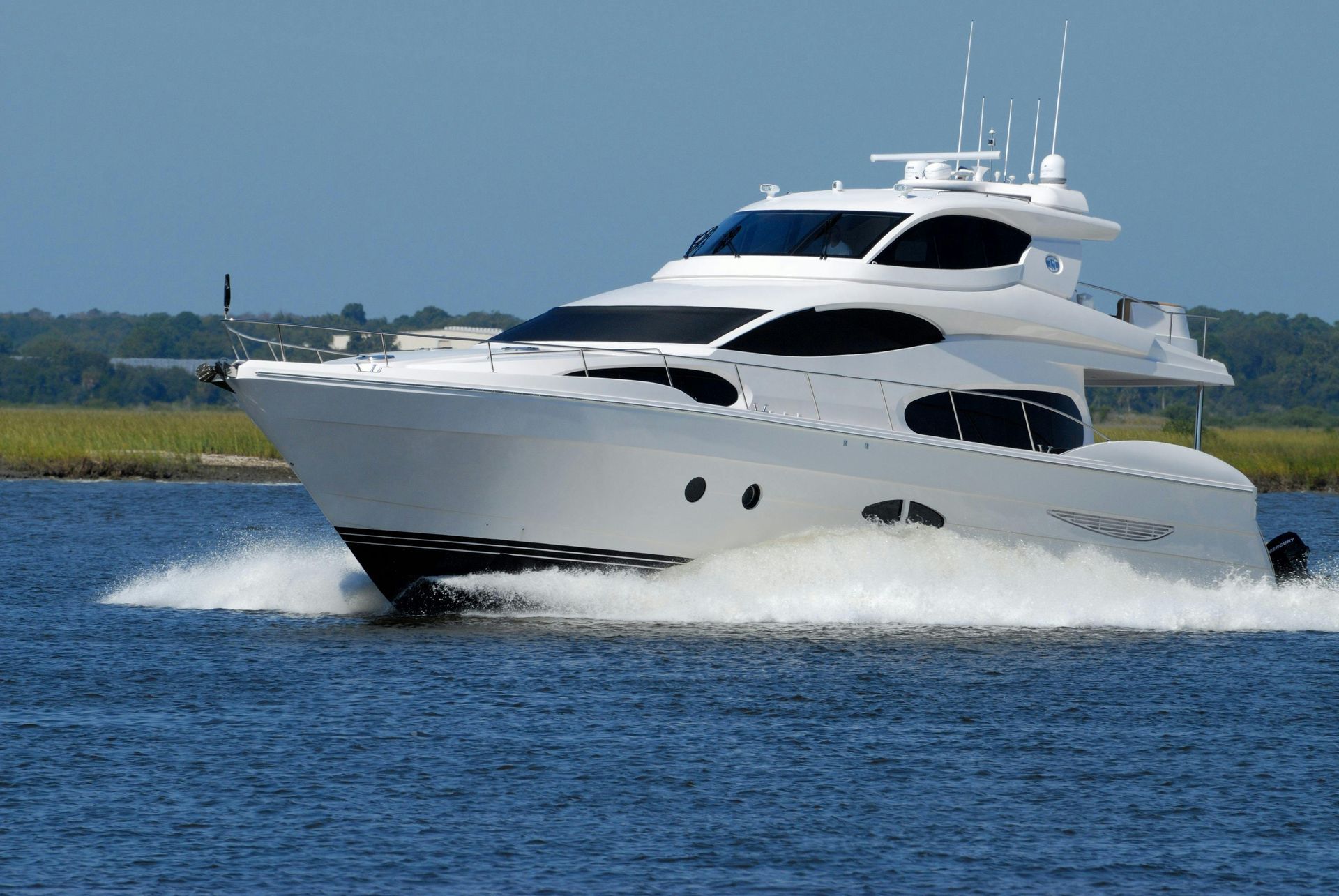
Tasks to Complete During a Yacht's Annual Maintenance
Owning a yacht is a rewarding experience, offering freedom and adventure on the open water. However, to ensure its longevity and maximize your enjoyment, regular maintenance is essential. Each year, yacht owners should dedicate time to comprehensive maintenance tasks that prepare the vessel for another season of use. This article outlines critical aspects of annual yacht maintenance and provides a roadmap for the diligent yacht owner.
Understanding the Importance of Regular Yacht Maintenance
Regular maintenance is not just a good practice; it's vital to the performance and safety of your yacht. Proper upkeep helps to avoid expensive repairs in the long run and keeps the boat operating at its best. By conducting annual maintenance, you extend the life of key components and systems, allowing you to enjoy every minute onboard.
Moreover, yacht maintenance significantly impacts the resale value. A well-maintained yacht tends to attract buyers more easily and can command a better price. Thus, annual checks and repairs are an investment in both your enjoyment and potential future profit.
The Role of Annual Maintenance in Yacht Longevity
Annual maintenance plays a crucial role in prolonging the life of your yacht. It involves a thorough inspection of essential systems, from the hull to the engine, ensuring that everything is functioning optimally. Components that are regularly checked and maintained are less likely to fail, which can prevent costly emergency repairs and downtime.
Furthermore, identifying minor issues before they escalate into major problems allows for timely interventions. This proactive approach to maintenance can save you both time and money as the need for extensive repairs diminishes. Regularly scheduled maintenance also provides an opportunity to upgrade systems and components, ensuring your yacht remains equipped with the latest technology and safety features, enhancing both performance and comfort on the water.
Safety Implications of Neglected Yacht Maintenance
Neglecting maintenance can lead to significant safety hazards on the water. A malfunctioning engine, faulty navigational equipment, or compromised hull integrity can put both the crew and the vessel at risk. Regular checks are therefore essential for ensuring that all systems function correctly.
Additionally, compliance with safety regulations is paramount. Many regions mandate inspections of key safety features and equipment, and annual maintenance ensures adherence to these regulations, protecting both you and your passengers during voyages. Beyond regulatory compliance, a well-maintained yacht fosters a culture of safety among the crew, instilling confidence that all systems are reliable and ready for the challenges of the open sea. This peace of mind allows for a more enjoyable and relaxed experience, whether you're embarking on a short day trip or a lengthy ocean crossing.
Preparing for Your Yacht's Annual Maintenance
The first step in effective yacht maintenance is preparation. Setting aside dedicated time to execute a thorough maintenance routine will set the stage for success. Preparing properly involves creating a checklist and gathering all necessary tools and supplies to facilitate a smooth maintenance process.
Creating a Comprehensive Maintenance Checklist
A comprehensive checklist is invaluable for ensuring that no aspect of maintenance goes overlooked. This list should be tailored to your yacht's specific systems and known areas that require attention. Include items such as:
- Inspecting the hull for damage, blisters, and barnacle build-up.
- Changing engine oil and filters.
- Checking and cleaning all filters.
- Inspecting the electrical systems and batteries.
- Assessing safety equipment, including life jackets and fire extinguishers.
By following a detailed checklist, maintenance becomes more manageable, and you can systematically address each area without missing essential tasks. Additionally, consider incorporating seasonal checks based on your local climate and sailing conditions. For instance, if you live in an area prone to heavy storms, you might want to add an inspection of your mooring lines and fenders to ensure they are in good condition to withstand harsh weather. Regularly updating your checklist to reflect any changes or new systems on your yacht will also help keep your maintenance routine relevant and effective.
Gathering Necessary Tools and Equipment
Having the right tools on hand is crucial for efficient maintenance. Depending on what you discovered on your checklist, consider gathering the following:
- Wrenches and screwdrivers for mechanical work.
- Cleaning supplies, including brushes and marine-safe cleaners.
- Safety equipment, such as gloves and goggles.
- Diagnostic tools for electronic system checks.
- Lubricants for parts requiring greasing.
By being prepared with the necessary tools, you’ll save valuable time, allowing you to address all aspects of maintenance effectively. Furthermore, investing in high-quality tools can make a significant difference in the ease and efficiency of your work. For example, a good set of ratchet wrenches can speed up the process of tightening or loosening bolts, while a reliable multimeter is essential for diagnosing electrical issues. Don't forget to include a first aid kit in your supplies—safety should always be a priority when working on your yacht. Keeping your workspace organized and clutter-free will also help enhance your productivity and minimize the risk of accidents during maintenance tasks.
Key Areas to Focus on During Yacht Maintenance
During your yacht’s annual maintenance, there are several key areas that you should prioritize to ensure your vessel’s safety, performance, and comfort.

Inspecting and Cleaning the Hull
The hull is your yacht's first line of defense against the elements and marine growth. Begin by thoroughly inspecting the hull for cracks, blisters, or signs of wear. Additionally, cleaning it is essential to remove any algae, barnacles, and other debris.
Regular hull inspections not only help in identifying potential problems but also maintain the yacht's appearance and performance. If you find a significant amount of growth, consider using specialized hull cleaning services. Furthermore, applying a fresh coat of antifouling paint can significantly enhance the hull's protection against marine organisms, ensuring that your yacht remains swift and efficient in the water. This preventive measure can save you from costly repairs and improve fuel efficiency, making your trips more enjoyable and economical.
Checking the Engine and Propulsion System
Your engine is the heart of your yacht. Ensure it is in perfect working condition by performing an oil change, replacing filters, and checking coolant levels. Look out for any leaks or unusual sounds that could indicate underlying issues.
Additionally, inspect the propulsion system, including the propeller and shaft, for damage. Ensure that all components are well-lubricated and in good condition to promote safe and smooth sailing. Don't forget to check the alignment of the propeller shaft, as misalignment can lead to vibrations that may cause long-term damage. Also, consider running diagnostic tests on the engine to catch any electronic or mechanical issues early, ensuring that your yacht is ready for any adventure you plan to undertake.
Maintaining the Electrical Systems
The importance of a fully functioning electrical system cannot be overstated. During maintenance, examine wiring, batteries, and connections for signs of corrosion or damage. Test all electrical systems, including lights and navigational equipment, to ensure they operate correctly.
It's also wise to consider installing new fuses or circuit breakers if you notice any faults. A well-maintained electrical system enhances safety and prevents failures during critical moments on the water. Additionally, consider upgrading to energy-efficient LED lighting, which not only reduces power consumption but also enhances visibility and ambiance aboard your yacht. Regularly checking your battery's charge levels and replacing old batteries can prevent unexpected breakdowns and ensure that all onboard systems function smoothly throughout your journeys.
Upholding Interior and Exterior Finishes
Maintaining the aesthetic appeal of your yacht is as important as its mechanical upkeep. Inspect and clean exterior surfaces, such as decks and rails, and ensure that any varnish or paintwork is touched up as needed.
Internally, clean and organize cabins and workspaces. Use marine-safe cleaning agents and protect surfaces, ensuring that the comfort of your guests is prioritized for the season ahead. Regular upkeep of finishes also prevents more extensive repairs due to weather exposure. Consider adding protective covers for furniture and upholstery to guard against sun damage and moisture. Additionally, refreshing the interior with new cushions or decor can create a welcoming atmosphere for your guests, making each voyage a luxurious experience. Keeping the interior well-maintained not only enhances comfort but also preserves the value of your yacht over time.
Navigational Equipment Maintenance
Effective navigation is crucial for any yacht voyage. This section discusses the importance of maintaining essential navigational equipment.
Ensuring the Efficiency of Radar and GPS Systems
Begin by checking your radar and GPS units for software updates and functionality. It's vital to ensure all navigational tools are operational, as they play a key role in safety and navigation.
Periodically calibrate these systems, and inspect antennas and connections to prevent signal loss. This maintenance will enhance your experiences and safety on the water.
Maintaining Communication Devices
Communication devices, including VHF radios and satellite phones, are essential for staying connected during your voyages. Make sure these devices are functioning correctly by testing them regularly and checking that any required licenses are valid.
Change batteries and ensure that all equipment is stored properly and protected from the elements to prevent wear and tear. This precaution will ensure that you remain in contact, no matter where your adventures take you.
Post-Maintenance Procedures
Once the maintenance tasks are completed, it's crucial to follow necessary post-maintenance procedures to ensure everything is set for smooth sailing.
Conducting a Post-Maintenance Inspection
After finishing maintenance, a thorough inspection of the yacht is critical. Go through your checklist again to ensure that all tasks have been completed satisfactorily. Check that all tools have been removed and the boat is free of hazards.
This inspection can help mitigate risks and provide peace of mind before you head out. If everything checks out, you can feel confident when setting sail.
Properly Storing Your Yacht Post-Maintenance
Lastly, proper storage procedures can prolong your yacht's life. Ensure that the yacht is kept in a suitable environment, whether dry docked on land or tethered securely at the marina. Cover vulnerable areas to protect them from the weather.
By combining smart storage practices with thorough maintenance, you can enjoy many more seasons on the water, maximizing both enjoyment and safety during your adventures.
Contact us for Yacht Rentals and Sales
Stay inspired
Be the first to get new yacht related content and updates. We won't spam you.
Contact Us
We will get back to you as soon as possible.
Please try again later.
